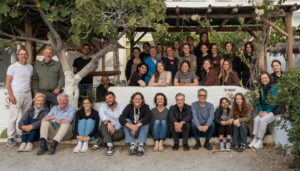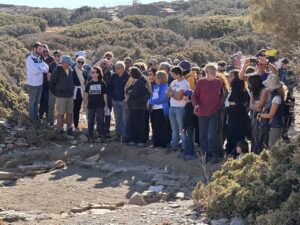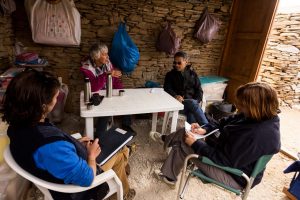
Web content producer
In the final week of excavations in the last week of October 2014, I spoke to the three directors of the Zagora Archaeological Project (ZAP), Professor Meg Miller, Associate Professor Lesley Beaumont and Dr Stavros Paspalas, to gain an overview of their plans and aspirations for the outcomes of the project.
I talked to them in the dig hut on site at Zagora, with the usual comings and goings of daily archaeological work: archaeologists coming to get equipment from the hut, and to ask for directorial guidance when a tactical decision was required about how to proceed with excavation.
As always, the directors were generous in offering insights and sharing their perspectives of the project for this blog. Their respect and affection for each other is palpable, and although they treat the work with the utmost seriousness, commitment and professionalism, their camaraderie also results in plenty of laughter.
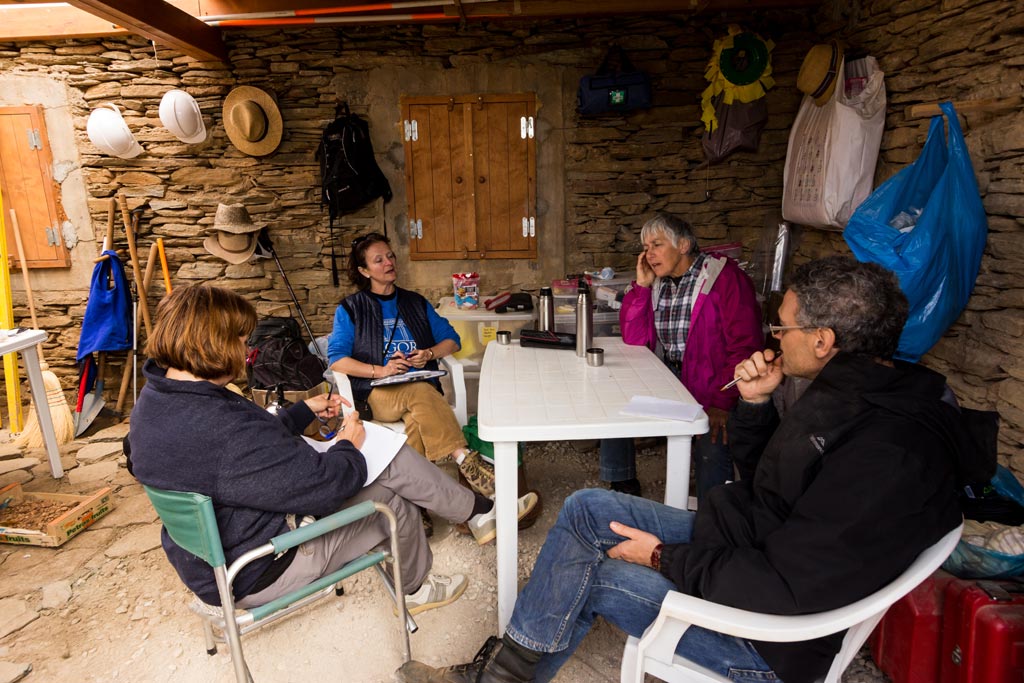
What follows is based on what they told me that day in the dig hut.
Building on past achievements
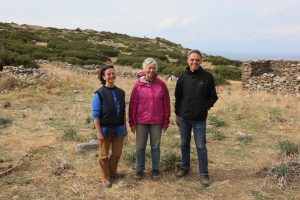
The previous excavators here, in the 1960s and 70s, when the project was headed by Professor Alexander Cambitoglou from the University of Sydney, were real pioneers in three important aspects:
– establishing best practice methods in planning holistic study of a settlement site, including laying out the base plan and devising strategies for appropriate methods of archaeological investigation
– developing an understanding of architectural construction with schist and local marble, and
– coming to grips with and organising the pottery chronology of this period as it pertained to Zagora.
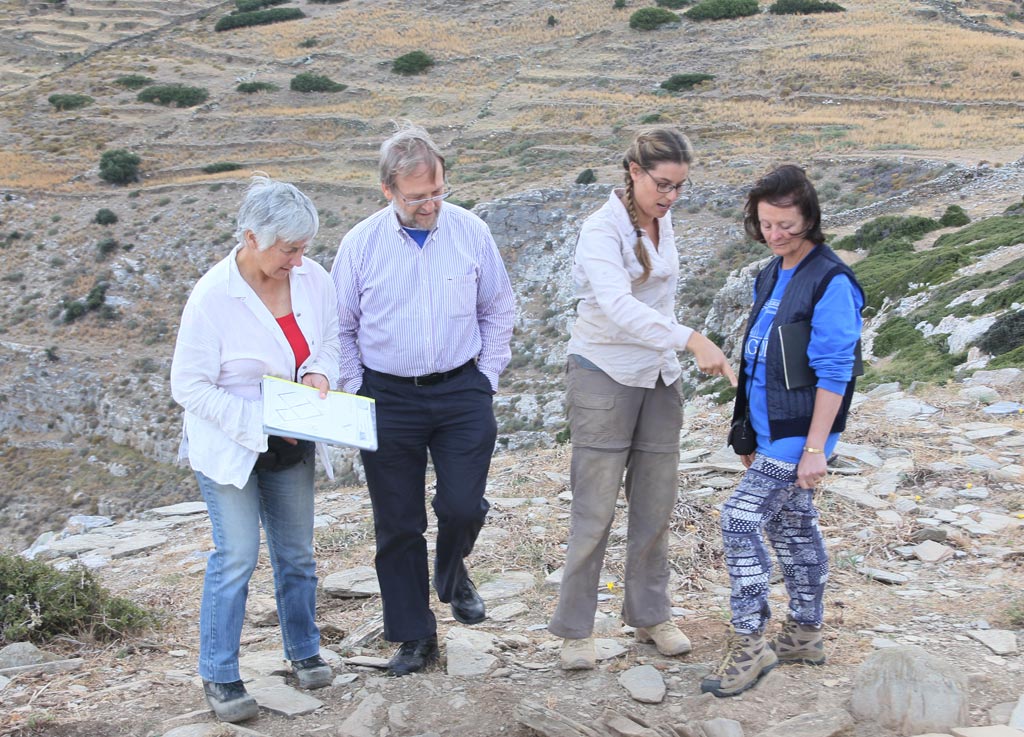
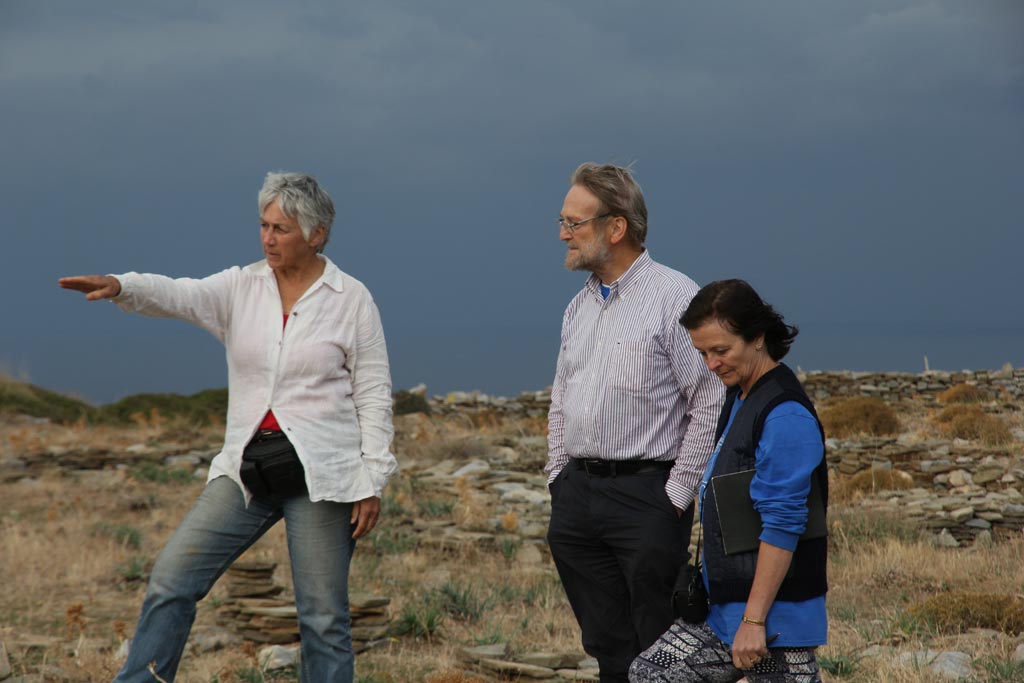
The current project is building on their achievements, using technologies available to us now which were not available 40 years ago.
Techniques and specialists employed in the 2012-2014 ZAP seasons

The following techniques and internationally renowned specialists were employed in the ZAP 2012-2014 seasons:
2012: intensive survey and reconnaissance across the whole site and limited transect survey outside the settlement boundaries
2012: four techniques of geophysical analysis under the direction of Dr Apostolos Sarris, from the Institute for Mediterranean Studies, Foundation of Research and Technology, Hellas, Rethymnon to determine where built structures were likely to exist below the soil surface
2012: archaeometry surface luminescence dating of built structures by Dr Ioannis Liritzis from the University of the Aegean, Dept of Mediterranean Studies
2012: examination by Steve Vasilakis of Zagora from a mariner’s perspective
2012 and 2014: geological survey by Dr Yannis Bassiakos, National Centre for Scientific Research ‘Demokritos’
2012-2014: total station survey under the direction of Richard Anderson and Andrew Wilson
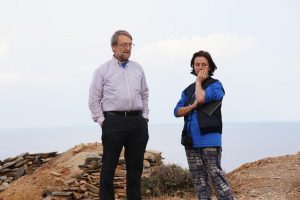
2012-2014: cleaning, sorting, documenting and conserving artefacts recovered from excavations
2013: aerial (kite) photography by Dr Hugh Thomas, University of Sydney and Adam Carr
2013: satellite remote sensing by Dr Adela Sobotkova, University of NSW, and Petra Janouchova, Charles University, Prague
2013 and 2014: photogrammetry (3D visualisation) of the site from above and laterally by Dr Matthew McCallum, University of Oslo, and Dr Hugh Thomas, the University of Sydney
2013 and 2014: flotation of soil debris undertaken by Roza Maria Beshara, Unversity of Athens, under the direction of archaeobotanist, Dr Evi Margaritis, University of Cambridge, to find small, light material such as marine debris (fish bones, shell), botanical samples (seeds) and charcoal, providing further indications about life during the period of the Zagora settlement
2013 and 2014: conservation of artefacts, both ceramic and metal, by archaeological conservator, Dr Wendy Reade, the University of Sydney
2013 and 2014: archaeological illustration of key ceramic finds and architecture by artist, Anne Hooton
2014: archaeological architectural conservation under the direction of Dr Stefie Chlouveraki, Institute for Aegean Prehistory, East Crete
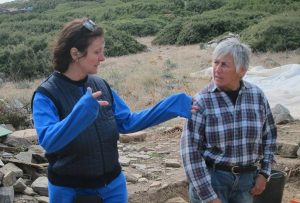
2014: residue analysis by Dr Maria Roumpou, from Harokopio University, Athens, to determine what kinds of goods were stored and transported in different kinds of vessels. This is expected to provide evidence of trade patterns and economic structures.
2014: the study of marine faunal remains by archaeozoologist, Dr Tatiana Theodoropoulou, from the Wiener Laboratory, ASCSA
2014: research by Dr Joanne Cutler (an ERC-funded ProCoon project) into the textile tools (loom weights and spindle whorls) found at Zagora
2014: study of faunal remains (animal bones) by Dr Melanie Fillios which will provide evidence not only of food sources and diet but of possible secondary industrial or economic processes such as production of animal glue or tanning.
A clearer understanding of Zagora through architecture and site layout
The evidence from the the geophysical and surface surveys, aerial photography and satellite imaging combined with the excavations are providing a clearer picture of the wider layout and organisation of the settlement.
The current excavations have confirmed the findings of the 1960s and 70s: that the settlement was densely populated. If anything, it appears the buildings were even more extensively spread across the site than previously thought. They also have led to a better understanding of the various ways in which the units within the built environment were configured and used by Zagora’s inhabitants.
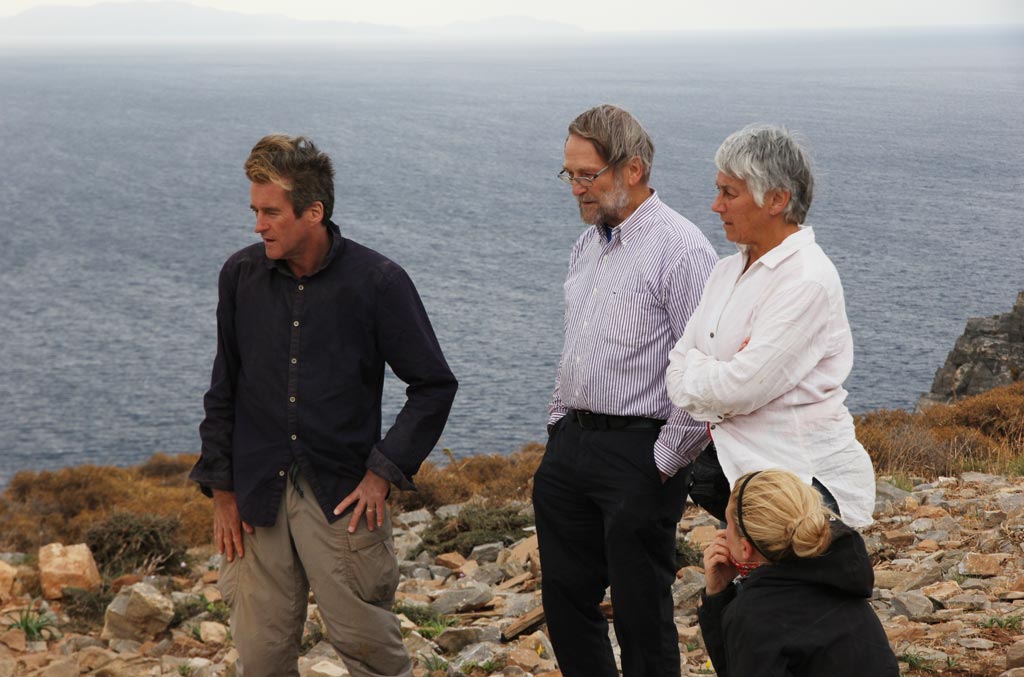
Seeking an understanding of the open public spaces

The excavated building remains show how the inhabitants of Zagora used and compensated for the irregular natural topography of the site and there may also be more evidence of the industrial and economic structures of the settlement.
A clearer understanding of Zagora through ceramic finds
1) A more precise, tighter chronology
The recent ceramic finds from the trenches within the fortification wall’s gate (Trenches 3, 8 and 9) are similar to material found in 1974 at a section of the fortification wall and noted in a preliminary report published in ‘Praktika’ 1974.
However, preliminary work from the recent ceramic and other finds in the excavation area nearest the fortification wall is suggesting a clearer, tighter and more precise understanding of the occupation of the site from about 825 to 750 BCE – or prior to about the last 50 years of its occupation. And the time frame is likely to become even tighter when it has been possible to review and consider where in the strata the artefacts have come from.
The previous archaeological campaigns of the 1960s and 70s focused on the last phase of occupation, towards 700 BCE. Through the recent work of the project, a better view of an earlier period of the Zagora settlement is emerging.
2) What transport amphorae reveal
The project has excavated and been processing a larger number of transport amphorae which appear to be late Geometric in date. These relatively unprepossessing vessels have the potential to tell us a great deal about the movement of raw materials and people in the period and what larger networks the inhabitants of Zagora had access to. The conventional belief was that such amphorae became common around the 7th century BCE but recent findings (now corroborated at Zagora) indicate it may have been two or three generations before that.
Transport amphorae are extremely important because their fabrics – the clays from which they are made – and a series’ particular form are, in many cases, recognisable as having been produced in different locations, different production centres. It is reasonable to assume that they were filled with goods at the points where the clay was produced. So if we have Corinthian transport amphorae at the site, it strongly indicates that goods reached Zagora from Corinth over in the Peloponnesos. Though it must always be kept in mind that transport amphorae (the 10-gallon drums of their day) could also be re-used after their first journey, and this observation poses one of the many complicating factors that must be taken into consideration when interpreting archaeological material. There are also indications of goods in transport amphorae having come from islands of the eastern Aegean.
These finds may necessitate a re-evaluation of the chronology of these artefacts and the goods that were transported in them as well as our understanding of large-scale distance trade at that time. This appears to suggest a quicker pace in the 8th century of contacts between various places which is prompting a re-evaluation of social developments and urbanisation at the time.
3) The pithoi designs
Through the examination of the designs on recently excavated pithoi, Zagora is contributing to a deeper understanding of the iconography, or pictorial representations, of the period. Iconography is one of the main avenues through which modern researchers can gain some understanding of ideologies of the 8th century.
The figural scene on the large pithos, shown below in the photograph and drawing, is a clear development from the purely geometric patterned motifs. It evidences a re-emergence of quite sophisticated figural art in the 8th century BCE – which is earlier than previously supposed for this kind of design.
The scene has led the Zagora researchers to reappraise the relationship between those pithoi and the fine painted wares because of its primary figural motif – a swordsman vigorously fighting a lion and about to be taken out by another behind him – was within the pottery corpus, hitherto only known on fine pottery: jugs, drinking cups and wine mixing bowls. A major goal of the researchers is to understand what this imagery would have meant to the people who commissioned it and who placed expensive items (as this large pithos was) with such scenes in their home.
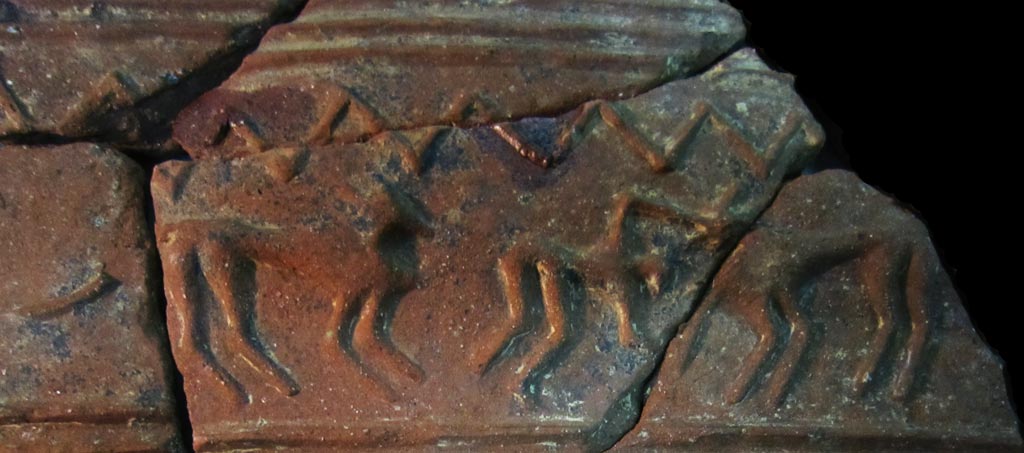
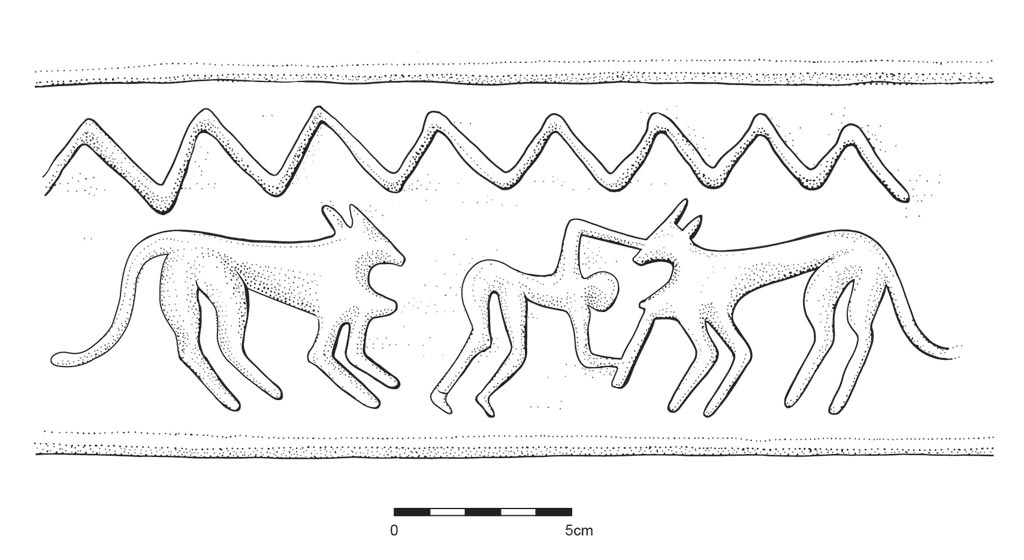
Industrial and economic processes
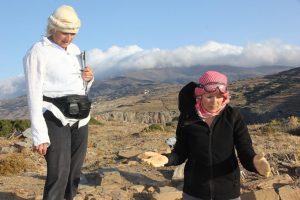
Obsidian, a dark volcanic glass that can be chipped and shaped to be used as a cutting tool, was thought to have been principally a Stone Age tool, no longer used during the Iron Age. However findings of worked obsidian at Zagora in the 1960s and 70s contributed to a revision of this view. (Ref: ‘Flaked-stone artifacts in Greece during the historical period’ by Dr Curtis N. Runnels, in ‘Journal of field archaeology’, vol. 9, no. 3. (autumn, 1982)) Evidence from ZAP 2012-2014 will contribute to the understanding of tools made and used in the early Iron Age.
The analysis of organic residues on vessels used by the Zagorans is designed to shed light on what they were producing or trading, and storing in large quantities.
Archaeological architectural conservation
Last year a comprehensive plan was developed and preliminary work undertaken by archaeological architectural conservator, Dr Stefie Chlouveraki, from the Institute for Aegean Prehistory, East Crete. This year, substantial conservation work was done around and on the remains of the temple area and also in and around the building remains at Area J, excavated in the 1960s and 70s. Weeds were removed and the areas treated to discourage their return because plant roots can bury down between built structures and dislodge them. Stefie’s team developed techniques to prevent damage by rain, built walls around settlement structures to further protect them. A more comprehensive post about this work will be published on this blog.
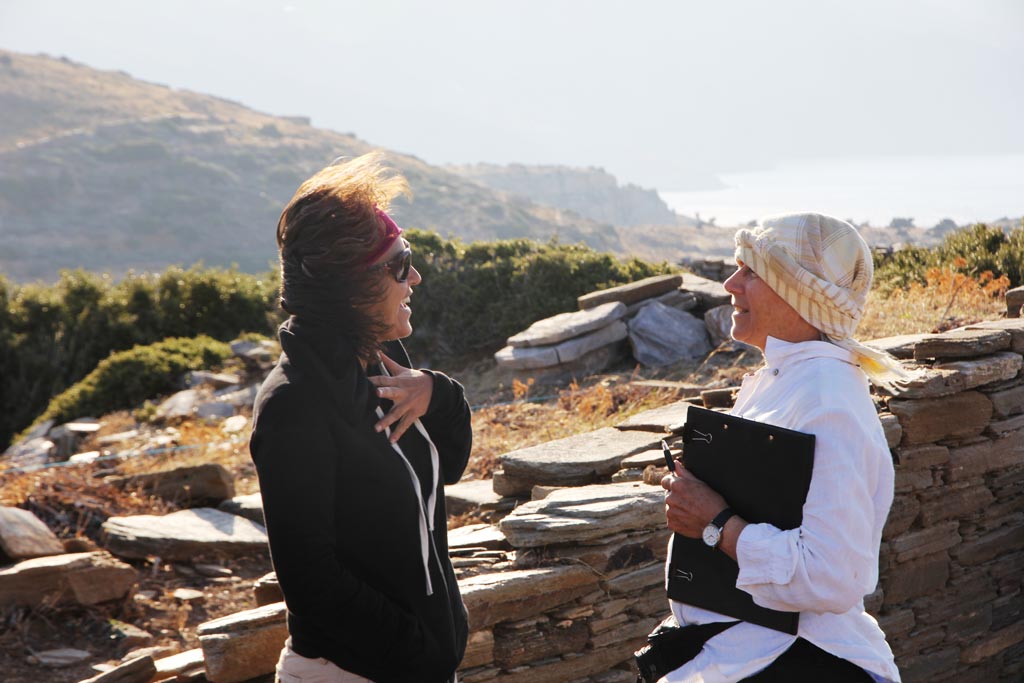
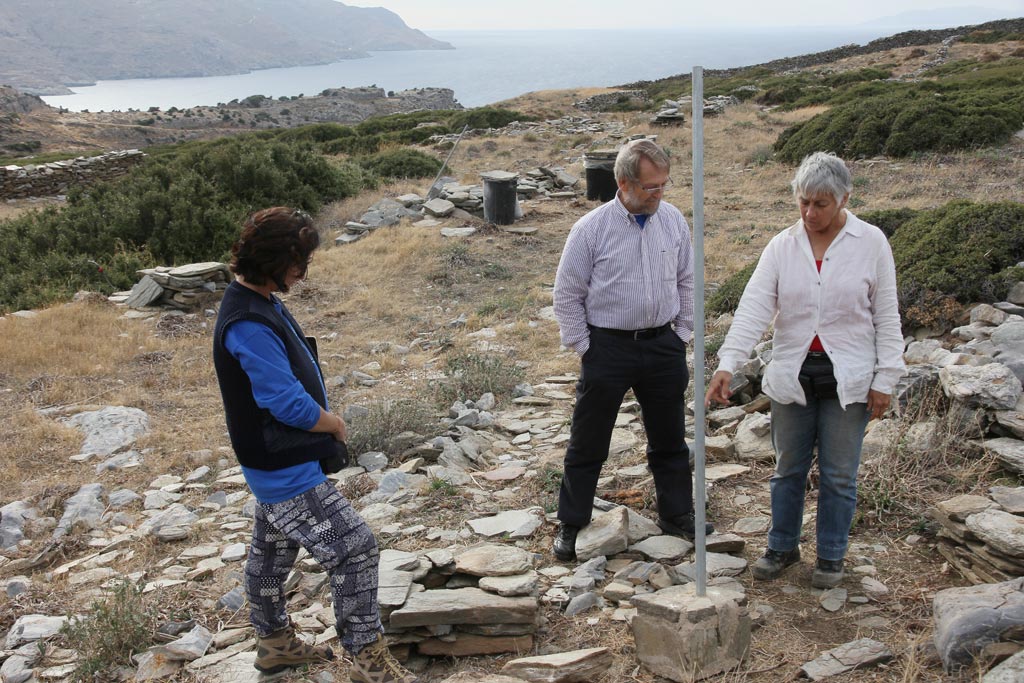
Research and publication
The Zagora Archaeological Project is now at the research and publication phase. Several of the ZAP specialists, such as Beatrice McLoughlin, coarse ware specialist and finds manager, Wendy Reade, conservator, Melanie Fillios, faunal remains analyst, Annie Hooton, archaeological illustrator/artist and Bob Miller, archaeological photographer, as well as the three ZAP directors, Meg Miller, Lesley Beaumont and Stavros Paspalas, who is the fine ware expert as well as a ZAP director, remained in Chora to work in the Archaeological Museum of Andros beyond the excavation season. This part of the work is called the study season.
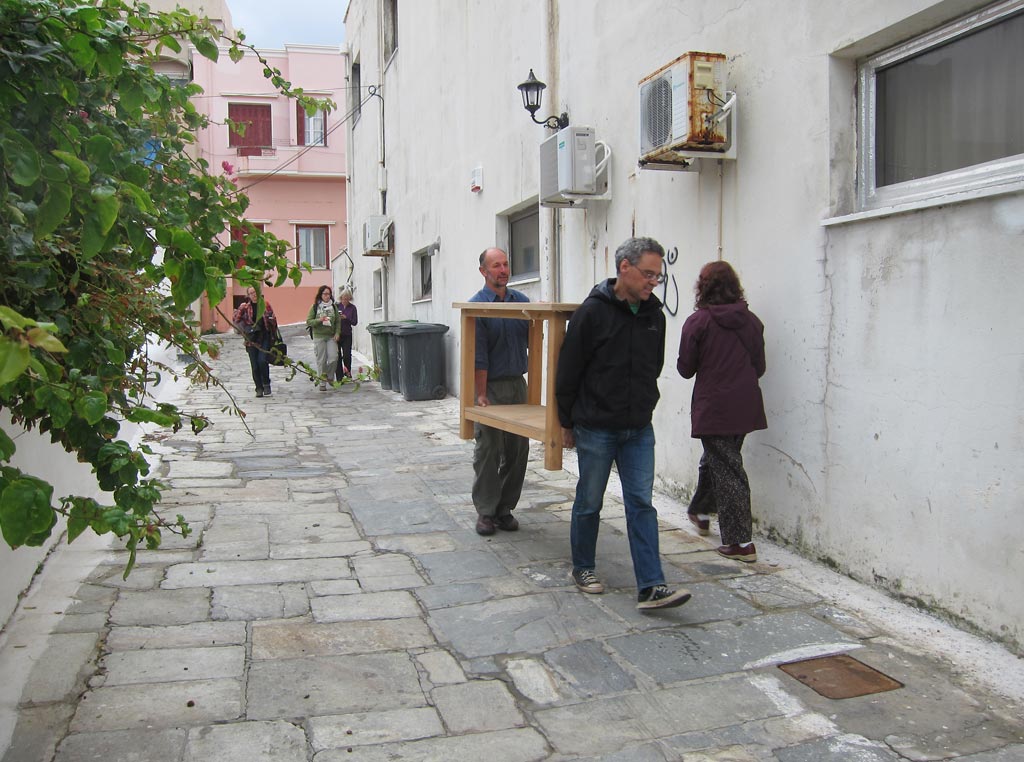
It is only once the field work is over that the archaeologists can really start fitting the pieces of the jig saw puzzle together to see how the picture emerges.
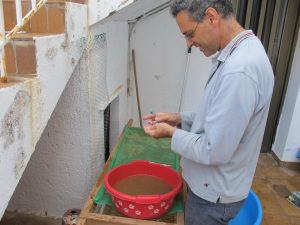
There have been two major publications about the Zagora archaeological campaigns of the 1960s and 70s: ‘Zagora 1’ and ‘Zagora 2’. Stavros Paspalas and Beatrice McLoughlin, our fine ware and coarse ware experts, respectively, are now completing, along with their collaborators, the final volume of the series, ‘Zagora 3’ – making their comprehensive and detailed knowledge of considerable benefit to ZAP.
In parallel with the work on the major publication on the Zagora Archaeological Project, several other academic/scientific publications will need to be written by the project directors, including reports for the Archaeological Society at Athens’ journals, ‘Praktika’, and ‘Ergon’ on the 2014 season and reports for the leading Australian Old World archaeological journal, ‘Journal of Mediterranean Archaeology’.
There will be some breathing space as what is being learned about the Zagora settlement is consolidated, written up and, finally, published.
A great deal has been learned about the Zagora settlement during the field and study seasons of 2012, 2013 and 2014. But there are so many more questions now to be answered…. Now that we’re over the exhaustion, it is exhilarating to think of perhaps going back there one day and resuming the excavations.
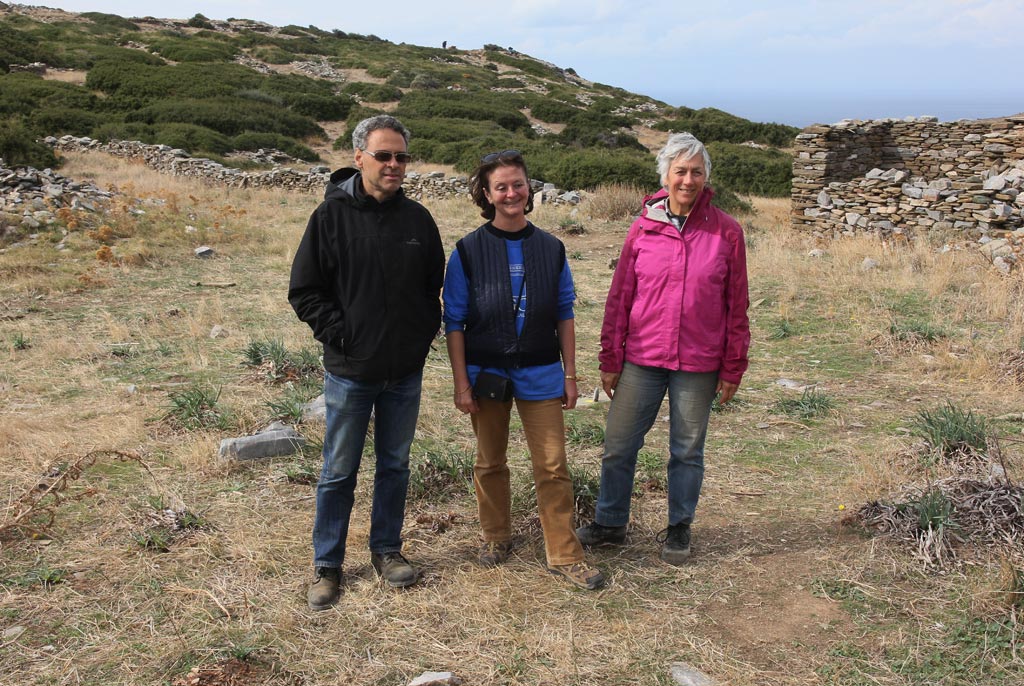
I wish to express my thanks to the ZAP directors, Meg Miller, Lesley Beaumont and Stavros Paspalas, who were not only generous with information during the interview, but since then have each made valuable suggestions for the post.
